It's estimated that nearly 60% of dogs are overweight or obese, up from 56% in 2018, according to a 2022 survey by The Association for Pet Obesity Prevention. In fact, obesity is one of the most common preventable diseases in dogs. So, is your dog overweight? Here's all about dog obesity, causes of obesity in dogs, signs of an obese dog, tips for dog weight loss and 26 dogs prone to canine obesity and the fattest dog breeds.
What is dog obesity or canine obesity?

Dog obesity, also known as canine obesity, is a condition where a dog has an excess amount of body fat that causes weight gain and extra body mass. In general, dogs are considered overweight when they weigh 10-20% over their ideal body weight and are considered obese when they way 20% over their ideal body weight.
Obesity in dogs is a common issue and can result from a combination of factors such as overeating, lack of exercise, and genetic predisposition. It can have serious consequences for a dog's health and well-being as well as negatively affect a dog's overall quality of life and lifespan. Obese dogs have an increased risk of various diseases such as diabetes and arthritis as well respiratory problems and cardiovascular issues.
What causes obesity in dogs?
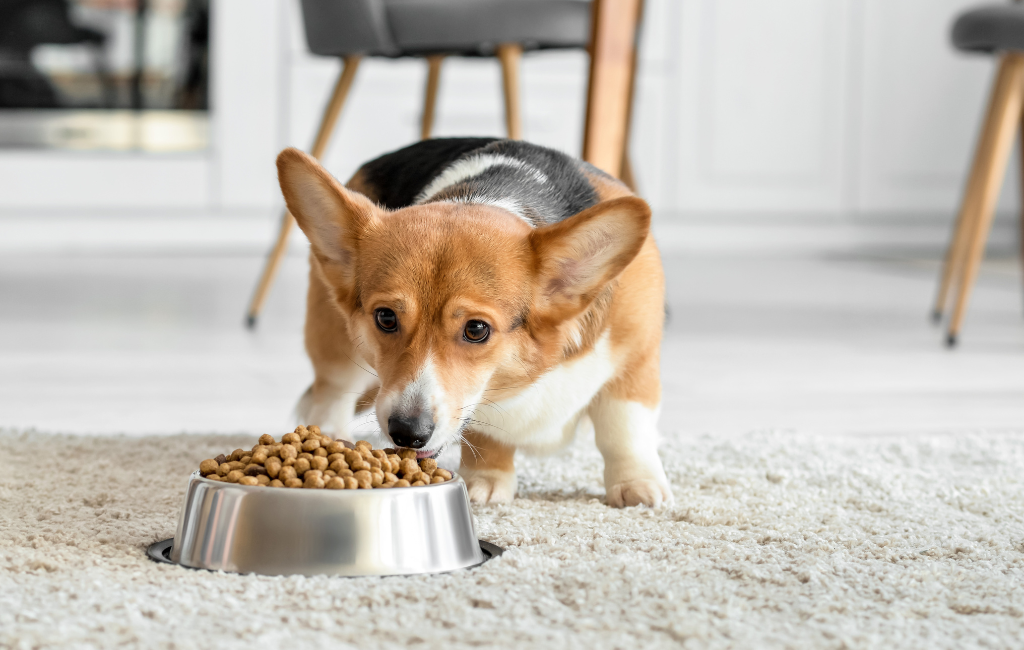
Obesity in dogs can result from one or a combination of factors and understanding them is crucial for prevention and management. Some common causes of obesity in dogs include:
-
Overeating - The most straightforward cause of obesity is consuming more calories than the dog expends through activity through overfeeding, giving excessive treats, or feeding high-calorie diets. For example, wet dog food has a lower caloric density compared to dry food. In addition, feeding homemade dog food can make it more difficult to calculate caloric intake.
-
Lack of Exercise - Insufficient physical activity can lead to weight gain, as dogs that do not get enough exercise likely won't burn off excess calories, contributing to the accumulation of body fat.
-
Genetics - Some dogs are more predisposed to obesity due to breed or other genetic factors (e.g. certain breeds may have a tendency to gain weight more easily than others).
-
Age - Older and senior dogs may be prone to weight gain as their metabolism slows down.
-
Medical Conditions - Some medical conditions, such as hypothyroidism or Cushing's disease, can contribute to weight gain.
-
Poor Feeding Habits - Inconsistent feeding schedules, free-feeding, or feeding table scraps can lead to overconsumption of calories.
-
Emotional Factors - Stress, boredom, or anxiety can lead to overeating in dogs as some dogs use food as a coping mechanism.
-
Certain Medications - Some medications may have side effects that contribute to weight gain.
-
Spaying or Neutering - While spaying and neutering are important for health and population control, they can lead to changes in metabolism and hormonal balance, potentially increasing the risk of obesity.
-
Human Behavior - The feeding habits and lifestyle choices of dog owners can play a significant role in increasing risk of obesity, particularly those who feed their dogs excessive amounts of high-calorie human food, share unhealthy snacks and don't exercise much.
What are the risks of obesity in dogs?
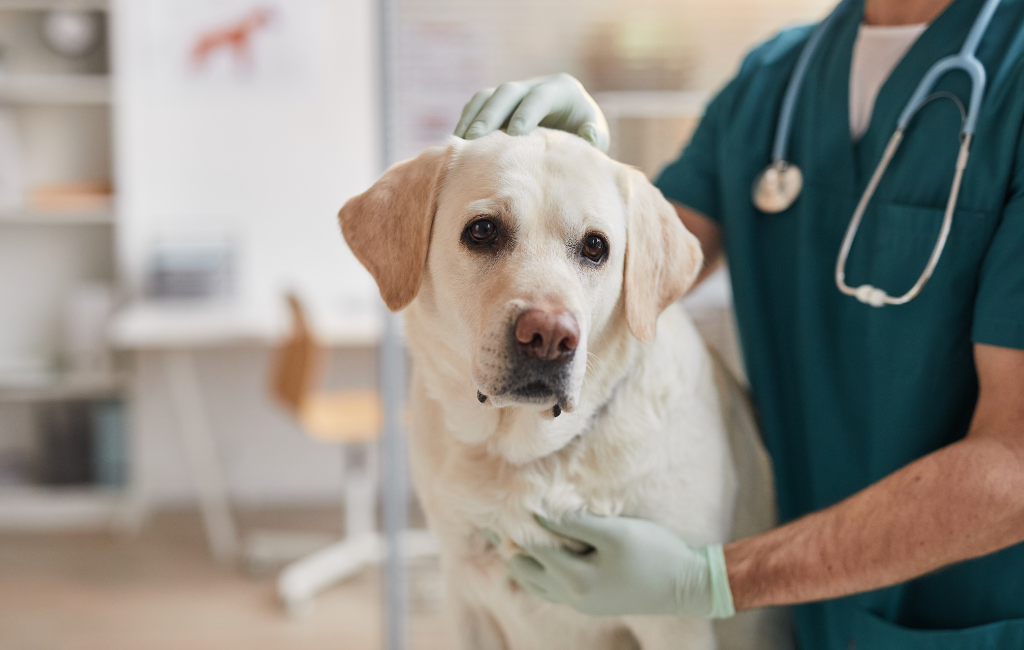
Obesity poses several risks to a dog's health and well-being. Some of the key risks associated with dog obesity include:
-
Joint Problems - Excess weight puts additional stress on a dog's joints, which can lead to arthritis and other musculoskeletal issues. This can result in pain, reduced mobility, and a decreased quality of life.
-
Diabetes - Overweight dogs are at a higher risk of developing diabetes and obesity can lead to insulin resistance, making it difficult for the dog's body to regulate blood sugar levels.
-
Cardiovascular Issues - Obesity is linked to canine cardiovascular issues in dogs, like heart disease. For instance, the extra weight puts strain on the heart, leading to reduced cardiac function.
-
Respiratory Problems - Obese dogs may experience difficulty breathing due to the excess weight putting pressure on the lungs and airways. This can lead to respiratory distress and a decreased tolerance for exercise.
-
Decreased Life Expectancy - Obesity is associated with a shorter lifespan in dogs as overweight dogs are more prone to various health issues that can significantly impact their overall longevity.
-
Skin Issues - Excess fat in the body can lead to skin problems, like inflammation and infections. For example, the folds in skin of obese dogs can trap moisture, creating an environment for skin issues.
-
Digestive Disorders - Obesity can contribute to digestive problems in dogs, like constipation and increased risk of gastrointestinal diseases.
-
Decreased Immune Function - Obesity can weaken the immune system, making dogs more susceptible to infections and illnesses.
-
Reduced Exercise Tolerance - Obese dogs often have lower energy levels and reduced stamina, making it difficult for them to engage in regular physical activity and creating an poor cycle for weight gain.
-
Decreased Reproductive Performance - Obesity can affect the reproductive health of dogs, leading to difficulties in breeding and potential complications during pregnancy.
It's important for dog owners to be aware of the risks associated with obesity and take proactive measures to prevent and manage it through proper nutrition, regular exercise, and veterinary care. Regular check-ups with a veterinarian can help monitor a dog's weight and address any health concerns promptly.
How can you tell if your dog is an ideal weight or if you have an overweight dog?

Identifying if a dog's is at an healthy weight involves assessing various physical indicators. Here are some ways to tell if your dog is becoming overweight:
-
Visible Waistline - A healthy dog should have a noticeable waistline in front of the hind legs when viewed from above. There should be an hourglass-like indentation in front of the hips, made by the chest sitting farther out on each side and the waist tapering in. If the body appears rounded with no defined waist or you can pinch more than an inch of skin and fat, it could be a sign of excess weight.
-
Palpable Ribs - You should be able to feel (but not see) each of your dog's ribs easily by gently running your hands along their sides. If the ribs are difficult to feel due to a layer of fat, it may suggest obesity.
-
Abdominal Tuck - The abdomen should tuck up or have a slight upward slope when viewed from the side. An absence of this tuck-up or a sagging abdomen may indicate overweight or obesity.
-
Body Condition Score (BCS) - Use the same body condition scoring system that your vet uses to evaluate your dog's weight. It typically ranges from 1 to 9, with a score of 4 or 5 considered ideal and a score of 6 or above usually indicating overweight or obesity.
Pro Tip: These tests should work for most dogs, despite variations in body shape and fur length. Some exceptions may include breeds like English Bulldogs and Pugs.
What are symptoms of an obese dog?

Monitoring your dog's weight and being able to identify the symptoms of obesity in dogs is crucial for early intervention and proper management. Here are common symptoms and signs that may indicate may indicate weight gain in dogs or that a dog is overweight or obese:
-
Visible Weight Gain, Rounded Appearance and Changes in Body Shape - Obvious weight gain and a rounded appearance when viewed from above are signs of obesity. The dog may lack a discernible waistline. If your dog's body shape changes, such as a loss of a discernible waistline or a rounding of the abdomen when viewed from above, it could be a sign of weight gain.
-
Difficulty Feeling Ribs - It should be easy to feel a dog's ribs with a gentle touch. If the ribs become difficult to feel due to a layer of fat, it may indicate weight gain or obesity.
-
Lack of a Defined Waist - The dog's abdomen may appear rounded or sagging rather than having a noticeable tuck-up in the abdominal area when viewed from the side.
-
Noticeable or Unhealthy Fat Deposits - Excessive fat deposits, especially around the neck, shoulders, and base of the tail, may be visible in overweight or obese dogs. These deposits can contribute to a rounded appearance.
-
Labored Breathing - Weight gain and obesity can lead to respiratory issues, and overweight dogs may show signs of labored breathing or panting even during mild exercise or at rest.
-
Lethargy, Decreased Stamina and Activity Levels - A noticeable decrease in stamina during physical activities or becoming less active in general may be indicative of weight gain and obesity. For example, dogs may show a reluctance to play or engage in exercise or tire easily during activity.
-
Decreased Mobility, Changes in Gait or Movement and Joint Issues - Weight gain can affect a dog's movement and overweight dogs may exhibit a reluctance to move. If you observe changes in gait, stiffness, or difficulty moving, it may be related to increased body weight. Overweight dogs are at an increased risk of joint issues, and symptoms may include difficulty in rising, stiffness, or limping.
-
Changes in Behavior - Weight gain and obesity can affect a dog's behavior. If a dog becomes less playful, shows signs of discomfort, or seems less interested in activities, it may be related to excess weight.
-
Skin Issues and Changes in Coat - Weight gain can affect the health of a dog's skin and coat. Excess fat deposits can lead to skin problems, including inflammation and infections. Folds in the skin may trap moisture, creating a breeding ground for skin issues. In addition, coat dullness or excessive shedding may be linked to weight gain.
-
Difficulty Grooming - Overweight and obese dogs may have difficulty grooming themselves, especially in hard-to-reach areas. This can also lead to skin and coat problems.
-
Unhealthy Eating Habits - Overeating or a constant desire for food may contribute to obesity. If your dog constantly begs for food or exhibits signs of excessive hunger, it's important to address their diet.
- Unexplained Weight Gain - If a dog is gaining weight without an apparent change in diet or exercise routine, it may be a sign of an underlying issue, including obesity. Unexplained weight gain should be evaluated by a erinarian.
It's important to regularly assess your dog's body condition and weight. If you notice any of these symptoms in your dog, it's essential to consult with a vet for a thorough examination. A veterinarian can assess your dog's body condition, rule out underlying health issues, and provide guidance on a suitable weight management plan, including dietary changes and exercise recommendations. Early intervention is key to preventing further health complications associated with obesity.
How do you help a dog lose weight?

Helping a dog lose weight involves a combination of dietary changes, increased physical activity, and consistent monitoring. Here are some general guidelines to help your dog achieve and maintain a healthy weight:
-
Consult with a Vet - Before making any changes, talk to your vet to determine the ideal weight for your dog and to rule out any underlying health issues. Your vet can also provide guidance on a safe and effective weight loss plan.
-
Adjust Diet - Work with your vet to develop a balanced and calorie-controlled diet for your dog. This may involve switching to a weight management or prescription diet, adjusting portion sizes and reducing the number of treats.
-
Control Portion Sizes - Measure your dog's food portions to ensure they are getting the appropriate amount. Follow the feeding guidelines provided by your vet or pet food manufacturer to avoid overfeeding.
-
Limit Treats and Table Scraps While Opting For Low-Calorie Treats - Reduce or eliminate high-calorie treats and table scraps from your dog's diet. If treats are necessary, choose low-calorie options (below), like small amounts of fruits and vegetables, or a portion of their regular food as a treat. It's always recommended that you check with your vet to ensure the safety of any treats.
-
Increase Exercise - Gradually increase your dog's physical activity according to their stamina and conditioning. Activities may include walks, playtime, and interactive games. Ensure your dog engages in regular exercise to help burn calories and promote overall well-being.
-
Provide Mental Stimulation - Engage your dog in mentally stimulating activities, like brain games and puzzle toys, to prevent boredom and keep them mentally active without relying on food for entertainment.
-
Hydration - Proper hydration is essential for overall health and can help control hunger. Ensure your dog has access to a full water bowl at all times.
-
Monitor Weight Loss Progress - Weigh your dog regularly to track their progress. Keep a record of their weight and adjust the diet and exercise plan as needed. Consult with your vet about any concerns.
-
Regular Veterinary Check-ups - Schedule regular check-ups with your veterinarian to monitor your dog's weight and adjust the weight loss plan as needed.
-
Be Patient and Consistent - Weight loss takes time and requires consistency. Sudden or drastic changes can be stressful for your dog, so aim for gradual and steady weight loss and sustainable progress.
Remember that every dog is unique, and weight loss plans should be tailored to their individual needs. Regular vet check-ups are important to monitor your dog's health throughout the weight loss process. If you have any concerns or if your dog's weight loss is not progressing as expected, consult with your vet for further guidance.
How do you adjust dog food for weight loss in dogs?
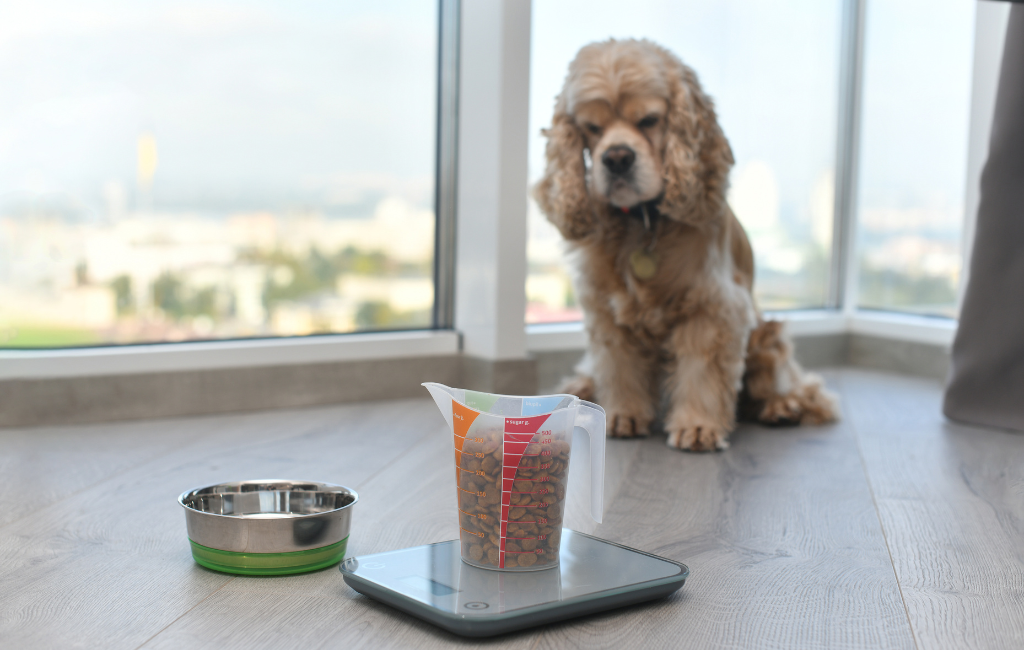
Adjusting a dog's food for weight loss involves reducing calorie intake while ensuring they still receive essential nutrients. Here are steps to adjust a dog's food for weight loss:
-
Consult with a Vet - Before making any changes to your dog's diet, consult with your vet. They can assess your dog's current status and health, determine their ideal weight and the proper caloric intake for their ideal size, and provide a safe and effective weight loss plan.
-
Determine the Correct Portion Size - You can use the feeding guidelines provided on the dog food packaging as a starting point but your vet will likely have more accurate recommendations. They can adjust the portion size based on your dog's individual needs, taking into account factors such as age, breed, activity level, and current weight.
-
Consider a Weight Management Diet - Your vet may put your dog on a high-quality, commercially available weight management dog food or opt for a prescription diet. These diets are formulated to provide balanced nutrition while controlling calorie intake.
-
Gradual Transition - If switching to a new weight management diet, transition gradually over several days to avoid digestive upset. Mix increasing amounts of the new food with the old food until the transition is complete. According to Tufts Vet Nutrition, do so over 7 days with the following guidelines:
-
Day 1: 90% old food, 10% new food
-
Day 2: 75% old food, 25% new food
-
Day 3: 50% old food, 50% new food
-
Day 4: 50% old food, 50% new food
-
Day 5: 25% old food, 75% new food
-
Day 6: 10% old food, 90% new food
-
Day 7: 100% new food
-
Measure Food Portions - Measure your dog's food, either using a kitchen scale or exact measuring cups, to ensure accurate portion sizes. Avoid estimating, as this can quickly lead to overestimating portions that can contribute to excess calorie intake.
-
Limit Treats and Table Scraps - Reduce or eliminate high-calorie treats and table scraps from your dog's diet. If treats are necessary, consider using a portion of their regular kibble or choose low-calorie treat options (below). And always account for treats in the daily calorie count.
-
Monitor Weight Loss Progress - Weigh your dog regularly and follow your vet's recommendations to adjust portion sizes if needed based on the progress. You'll want to aid for a gradual and steady weight loss.
-
Consider Nutritional Supplements - If your dog is on a calorie-restricted diet, consult with your vet about the need for any nutritional supplements to ensure they receive essential vitamins and minerals.
Remember that individual dogs may have different nutritional requirements, and adjustments may be necessary based on your dog's response to the weight loss plan. It's crucial to follow your vet's recommendations and seek their guidance if you have any concerns or questions about the process.
What are low calorie treat ideas for dog weight loss?
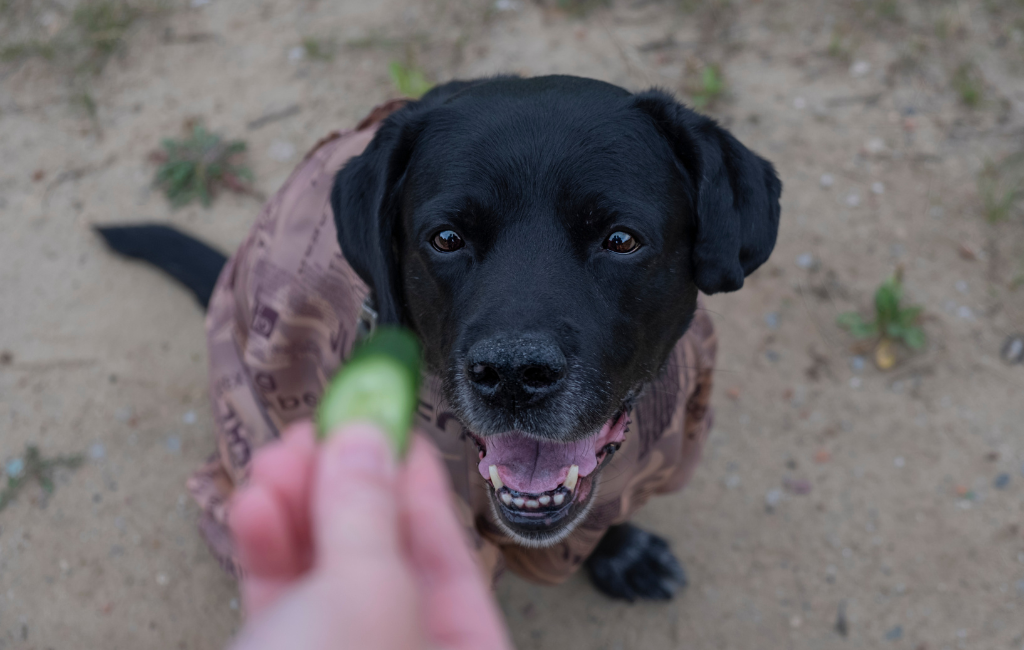
Low-calorie treats can be a great option for all dogs, but especially those on a weight loss plan. As always, do not add salt, fats (like butter or oil), sugar, spices or seasonings. Here are some low-calorie treat ideas:
-
Carrots (raw or lightly steamed)
-
Cucumbers
-
Watermelon (seedless and without the rind)
-
Apples (without seeds or core)
-
Green Beans (raw or steamed)
-
Zucchini (raw or steamed)
-
Pumpkin (puree or steamed)
-
Plain Greek Yogurt (in moderation)
-
Air-Popped Popcorn (air-popped without butter, salt or seasoning)
-
Plain, Unsalted Rice Cakes (broken into smaller. bite-sized pieces)
Always introduce new treats gradually and monitor your dog for any adverse reactions. It's always recommended you consult with your vet before introducing new treats, especially if your dog has any specific health conditions or dietary restrictions. Additionally, be mindful of the portion sizes to ensure that the treats fit into your dog's overall daily calorie allowance.
What do you do once your dog reaches its weight loss goal?
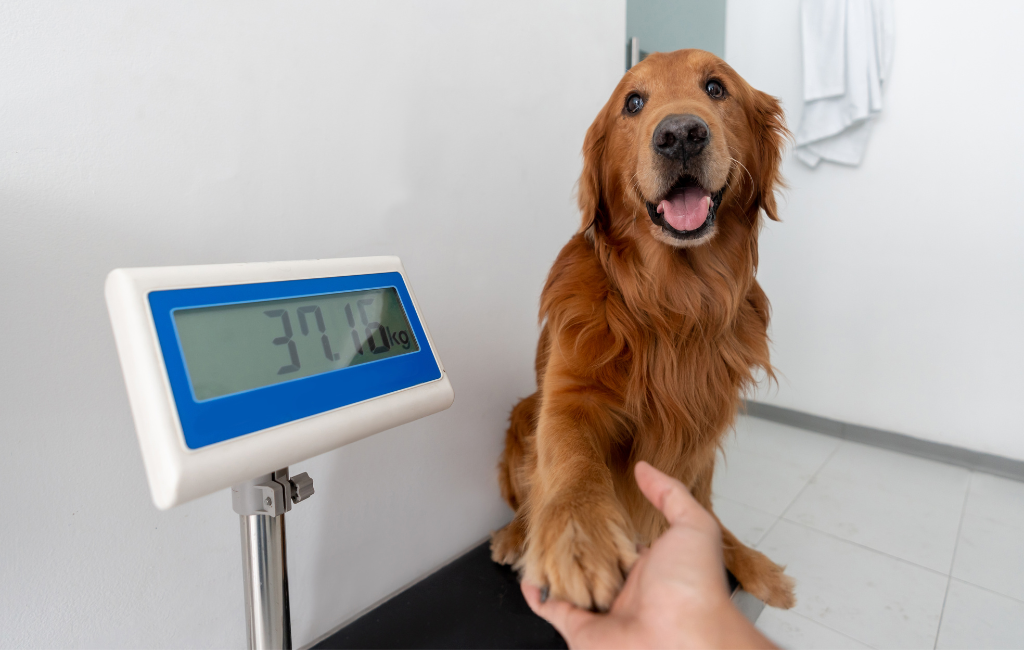
Once your dog reaches its weight loss goal, it's important to transition to a maintenance plan to help them maintain a healthy weight. Here are steps to consider:
-
Consult with Your Vet - Your vet will confirm that they have reached their target weigh and provide guidance on a maintenance plan.
-
Adjust Caloric Intake - Work with your vet to determine the appropriate caloric intake for your dog to maintain their current weight. This may involve adjusting portion sizes or selecting a maintenance diet.
-
Monitor Weight Regularly - Continue to monitor your dog's weight regularly, at least once a month. This helps catch any weight changes early and make adjustments to the diet or exercise routine if necessary.
-
Maintain Regular Exercise - Continue to provide regular exercise for your dog and increase the intensity and duration based on your dog's needs and abilities.
-
Stick to a Consistent Feeding Schedule - Maintain a consistent feeding schedule to help regulate your dog's metabolism and avoid free-feeding or excessive treats between meals.
-
Give Nutrient-Rich Treats in Moderation - If you offer treats, choose nutrient-rich options in moderation. You can continue with some of the low-calorie treat ideas mentioned earlier as well.
-
Continue Mental Stimulation - Continue providing your dog with mental stimulation, like games you can incorporate learning into, to prevent boredom and keep them mentally active without food.
-
Address Changes Promptly - If you notice any changes in your dog's weight, behavior, or overall health, consult your vet promptly. Early intervention is important.
-
Regular Ver Check-ups - Schedule regular check-ups with your vet to ensure that your dog remains on track weight-wise and in good health.
-
Celebrate Achievements - Celebrate the achievement of reaching your dog's weight loss goal. It's a significant accomplishment that contributes to their overall health and longevity.
Remember that maintaining a healthy weight is an ongoing process. Regular monitoring, a balanced diet, and consistent exercise are key components of a successful weight maintenance plan. If you have any questions or concerns, always consult with your vet for personalized guidance based on your dog's individual needs.
How do you prevent obesity in dogs?
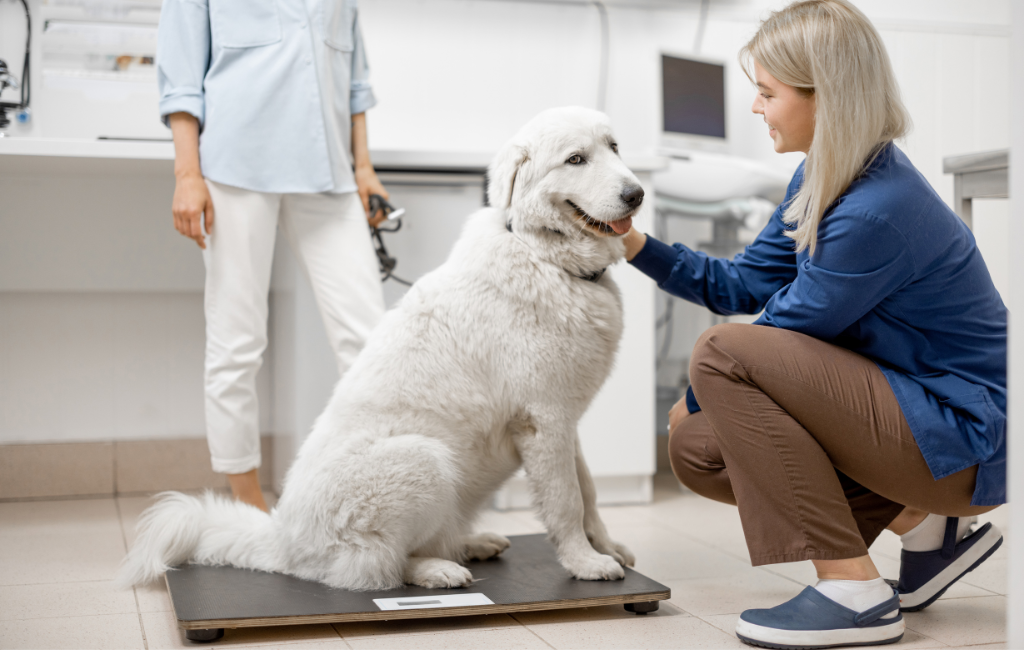
Preventing obesity involves a combination of proper nutrition, providing a balanced diet, controlling portion sizes, ensuring regular exercise, and addressing any underlying health issues. Regular vet check-ups can help monitor a dog's weight and overall health, allowing for early intervention if necessary.
-
Feed your dog a high-quality food that provides a balanced and nutritionally complete diet.
-
Make sure their diet is appropriate for their age, size, and activity level and adjust if necessary.
-
Control portion sizes and measure your dog's food portions to avoid overfeeding. Use a standard measuring cup and follow the recommended serving sizes, either on the package or by your vet.
-
Choose low-calorie treats, limit high-calorie treats and avoid giving table scraps.
-
Establish and stick to a regular, consistent feeding schedule to help regulate your dog's metabolism.
-
Control access to food and avoid free-feeding or leaving food out all day.
-
Promote regular physical exercise and mental stimulation, ensuring the amount of exercise is appropriate for your dog's breed, age, and overall health.
-
Monitor your dog's physical body condition using the aforementioned indications and a body condition score.
-
Regularly weigh your dog and monitor their weight over time to help identify gradual weight gain (and consult with a vet if you notice a consistent increase).
-
Be aware of any changes in your dog's behavior or overall health and promptly consult with your vet.
- Schedule regular check-ups with your vet and rule out any underlying health issues.
By implementing these preventive measures and maintaining a proactive approach to your dog's health, you can help ensure they maintain a healthy weight throughout their life. If you have any concerns or questions about your dog's weight, consult with your veterinarian for personalized guidance.
What dogs are prone to obesity and what are some of the fattest dog breeds?
While any dog or breed can become overweight or obese, some breeds may be more prone to weight gain due to genetic factors, metabolism, and other characteristics. Breeds that are generally more susceptible to obesity include:
1. Basset Hound
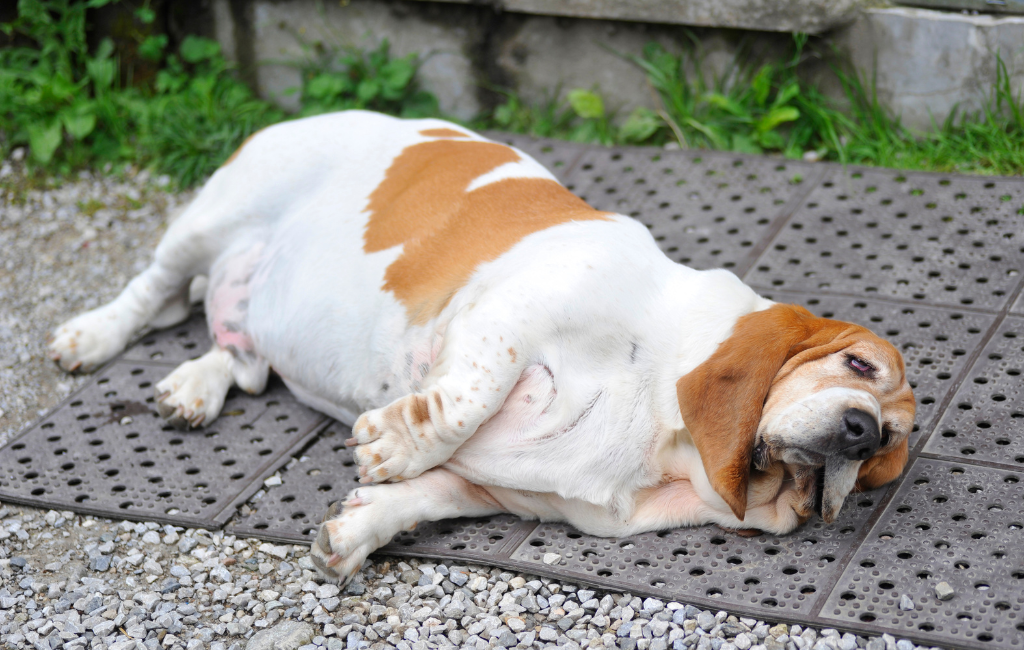
Basset Hounds are considered a breed that may be prone to obesity due to several factors, including:
-
Low Metabolism - Basset Hounds can have a lower metabolism compared to some other breeds. This means they may burn calories more slowly, making them more susceptible to weight gain if their caloric intake is not carefully managed.
-
Love of Food - Basset Hounds are known for their love of food. Their strong sense of smell and a tendency to be food-motivated can lead to overeating if not monitored closely.
-
Short Legs and Long Body - The unique body structure of Basset Hounds can contribute to challenges in maintaining a healthy weight. However, excess weight can put strain on their spine and joints and a healthy weight is crucial for their overall well-being and mobility.
-
Laid-Back Nature - Basset Hounds are known for their laid-back, easygoing, low energy and almost lazy nature. While this makes them wonderful companions, it can also mean that they may be less active than some other breeds, leading to a lower calorie expenditure.
-
Genetic Factors - Some Basset Hounds may have a genetic predisposition to gain weight easily and genetic factors can influence their metabolism and body composition.
2. Beagle

Beagles are considered a breed that may be prone to obesity due to various factors, including:
-
Love of Food - Beagles are known for their strong sense of smell and interest in food. This can make them more likely to overeat if not closely monitored.
-
Genetic Factors - Some Beagles may have a genetic predisposition to gain weight more easily than others, such as genes that influence metabolism and the body's ability to regulate weight.
-
Food Motivation and Eagerness to Please - Beagles are eager to please their owners and food can be a powerful motivator for them. Owners may unintentionally reinforce behaviors with treats, leading to excess calorie intake.
3. Border Terrier

Border Terriers may be more prone to obesity than other dogs for various reasons, including:
-
Small Size - Due to their small size, Border Terriers have lower caloric requirements compared to larger breeds. Overfeeding or providing excessive treats can lead to weight gain more easily in smaller dogs.
-
Love of Food - Border Terriers are known for their strong interest in food. This can make them more likely to overeat if not closely monitored.
-
Lack of Exercise - While Border Terriers are energetic and enjoy physical activity, small dogs may experience a lack of regular exercise that can contribute to weight gain.
-
Genetic Factors - Some Border Terriers may have genetic factors that affect their metabolism and propensity to gain weight. It's essential to consider the dog's individual characteristics.
4. Boxer
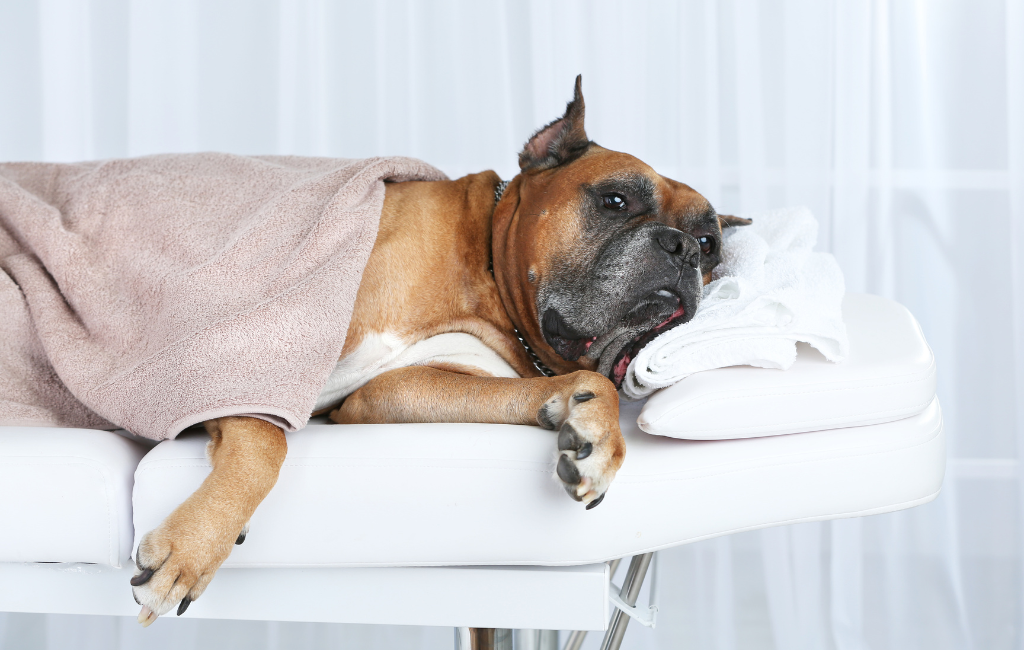
Though Boxers are athletic and muscular, they can be prone to obesity for several reasons, including:
-
Love of Food - Boxers may have a hearty appetite, and overfeeding can lead to excess calorie intake, contributing to weight gain. It's important to provide a balanced and portion-controlled diet.
-
Inactive Lifestyle - Boxers are an active and energetic dog and an inactive lifestyle can lead to weight gain. Regular exercise is essential to keep them physically fit and mentally stimulated.
-
Genetic Factors - Some Boxers may have genetic factors that affect their metabolism and predispose them to weight gain.
-
Brachycephalic Breed - Bulldogs have short noses, which can lead to breathing issues and respiratory difficulties that cause exercise intolerance.
-
Medical Conditions - Boxers are more prone to certain medical conditions, such as hypothyroidism, that affect a dog's metabolism and contribute to weight gain.
5. Bullmastiff

Bullmastiffs can be prone to obesity due to several factors, including:
-
Large Size - Bullmastiffs are one of the larger dog breeds and their size can make them more susceptible to weight-related issues and have a higher risk of obesity if their caloric intake is not carefully managed.
-
Genetic Factors - Some Bullmastiffs may have genetic factors that affect their metabolism and predispose them to weight gain.
-
Love of Food - Bullmastiffs may have a hearty appetite which can lead to excess calorie intake, contributing to weight gain. Due to their size, it's crucial to provide a balanced and portion-controlled diet.
-
Lack of Exercise - Because most giant dogs have low to moderate exercise needs, they may receive an insufficient amount of physical activity. Despite their size, Bullmastiffs are a working breed that benefits from regular exercise to maintain a healthy weight and overall well-being and inactive lifestyle can contribute to weight gain.
6. Cavalier King Charles Spaniel

Cavalier King Charles Spaniels, like many small dog breeds, may be prone to obesity due to various factors, including:
-
Small Size - Due to their small size, Cavaliers have lower caloric requirements compared to larger breeds. Overfeeding or providing excessive treats can lead to weight gain more easily in smaller dogs.
-
Genetic Factors - Some Cavaliers may have genetic factors that affect their metabolism and predispose them to weight gain.
-
Laid-Back Nature - Cavaliers are generally laid-back, which can lead to a lack of regular exercise that can contribute to weight gain.
-
Love of Food - Cavaliers may have a love for food, and their affectionate nature can sometimes result in owners providing extra treats. It's important to be mindful of treat intake and overall caloric consumption.
-
Health Issues - Cavaliers are prone to certain health conditions, such as hypothyroidism, that can affect a dog's metabolism and contribute to weight gain.
7. Chihuahua
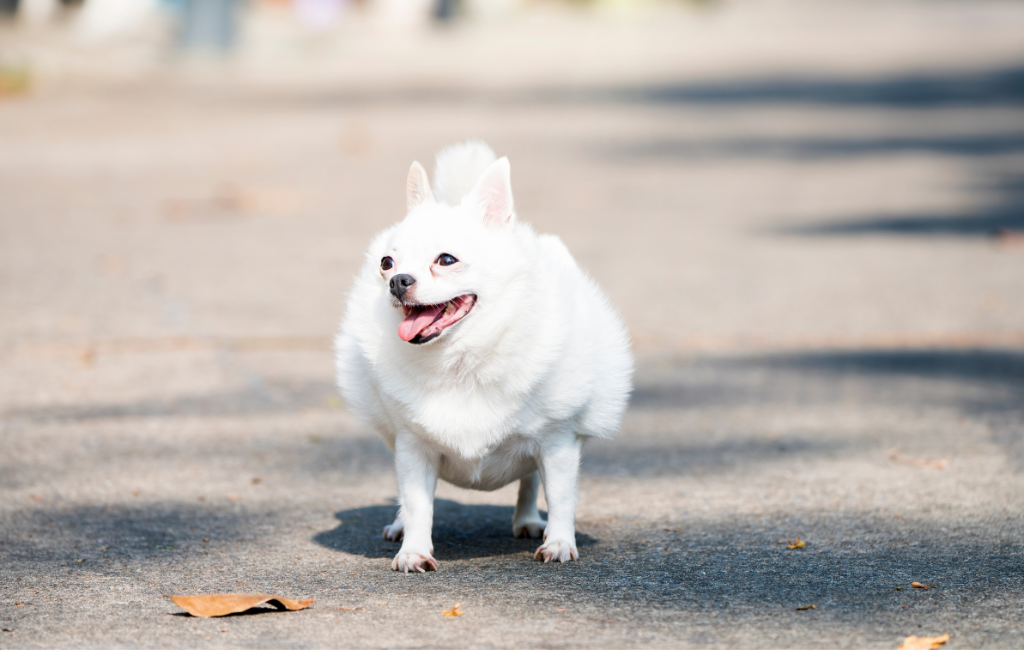
Chihuahuas, like other small dog breeds, may be prone to obesity for several reasons, including:
-
Small Size - Chihuahuas have lower caloric requirements compared to larger breeds, so overfeeding or providing excessive treats can lead to weight gain more easily in smaller dogs.
-
Genetic Factors - Some Chihuahuas may have genetic factors that affect their metabolism and predispose them to weight gain.
-
Lack of Exercise - Chihuahuas are an active breed, but their small size may lead to owners assuming they don't need as much exercise. That lack of regular exercise can contribute to weight gain.
-
Health Issues - Chihuahuas are prone to certain health conditions, such as hypothyroidism, can affect a dog's metabolism and contribute to weight gain.
8. Cocker Spaniel
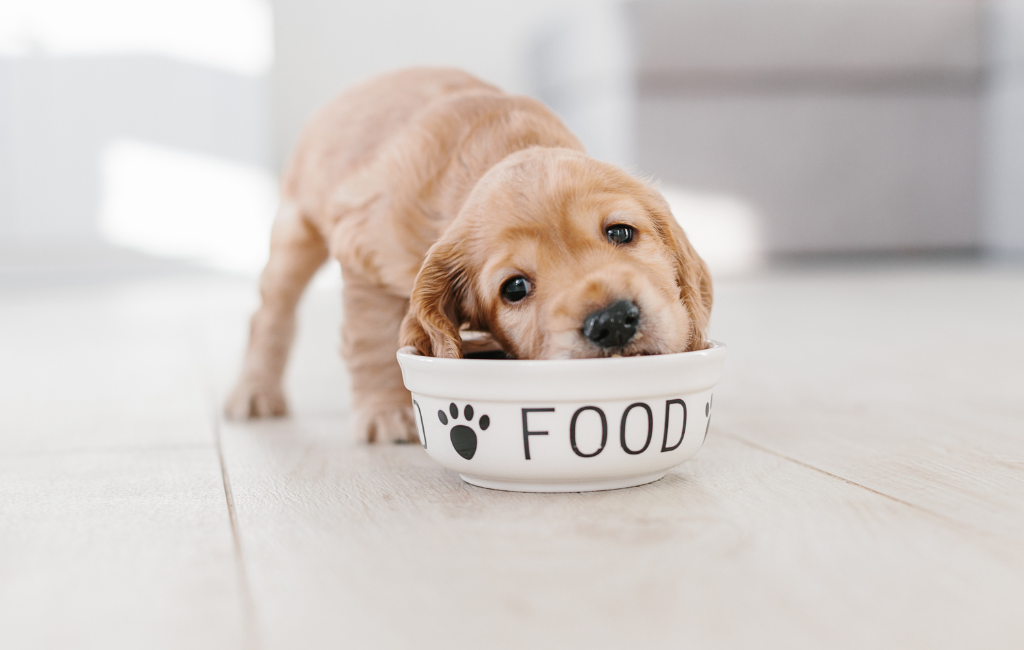
Cocker Spaniels may be prone to obesity due to various factors, including:
-
Genetic Factors - Some Cocker Spaniels may have genetic factors that affect their metabolism and predispose them to weight gain.
-
Love of Food - Cocker Spaniels are known for their love of food and having a hearty appetite, which can lead to overfeeding. Also, their affectionate nature can sometimes lead to extra treats.
-
Lack of Exercise - While Cocker Spaniels are an active breed, a lack of regular exercise can contribute to weight gain.
-
Health Issues - Cocker Spaniels can be prone to certain health conditions, such as hypothyroidism, can affect a dog's metabolism and contribute to weight gain.
9. Corgi
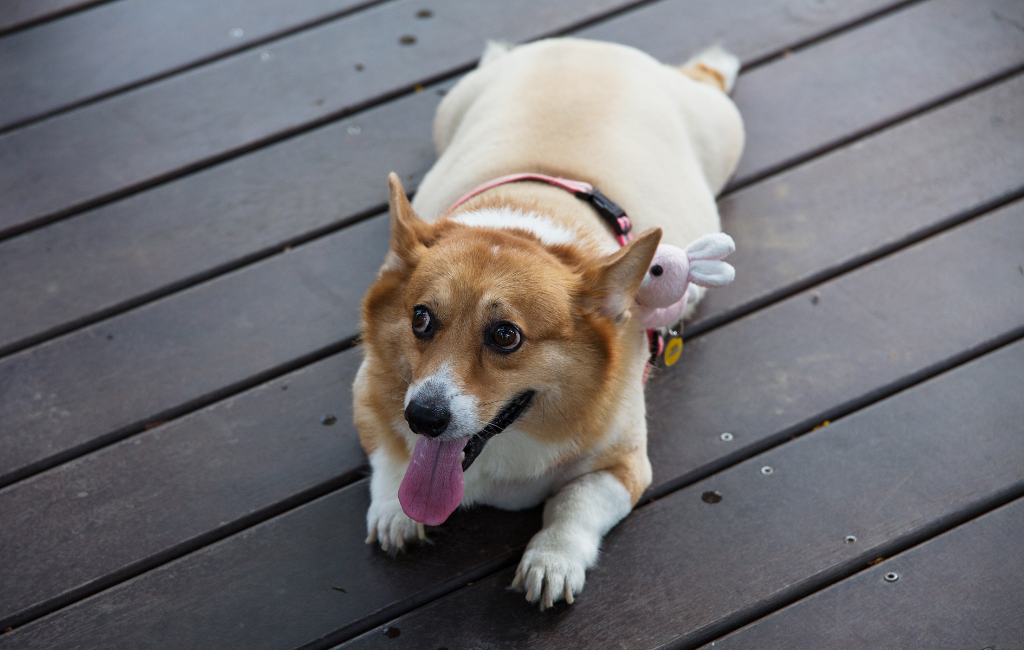
Both Pembroke Welsh Corgis and Cardigan Welsh Corgis can be prone to obesity due to several reasons, including:
-
Small Size - Corgis have lower caloric requirements compared to larger breeds, so overfeeding or providing excessive treats can lead to weight gain more easily in smaller dogs.
-
Love of Food - Corgis tend to love food, have a hearty appetite and be quite food-motivated. Their love for food can lead to overeating if portion sizes and treat intake are not carefully controlled.
-
Short Legs and Long Body - The unique body structure of Corgis can contribute to challenges in maintaining a healthy weight. However, excess weight can put strain on their spine and joints and a healthy weight is crucial for their overall well-being and mobility.
-
Genetic Factors - Some Corgis may have genetic factors that affect their metabolism and predispose them to weight gain.
-
Lack of Exercise - Despite their size, Corgis are an active breed thanks to their herding dog instincts and require regular exercise to prevent weight gain.
10. Dachshund
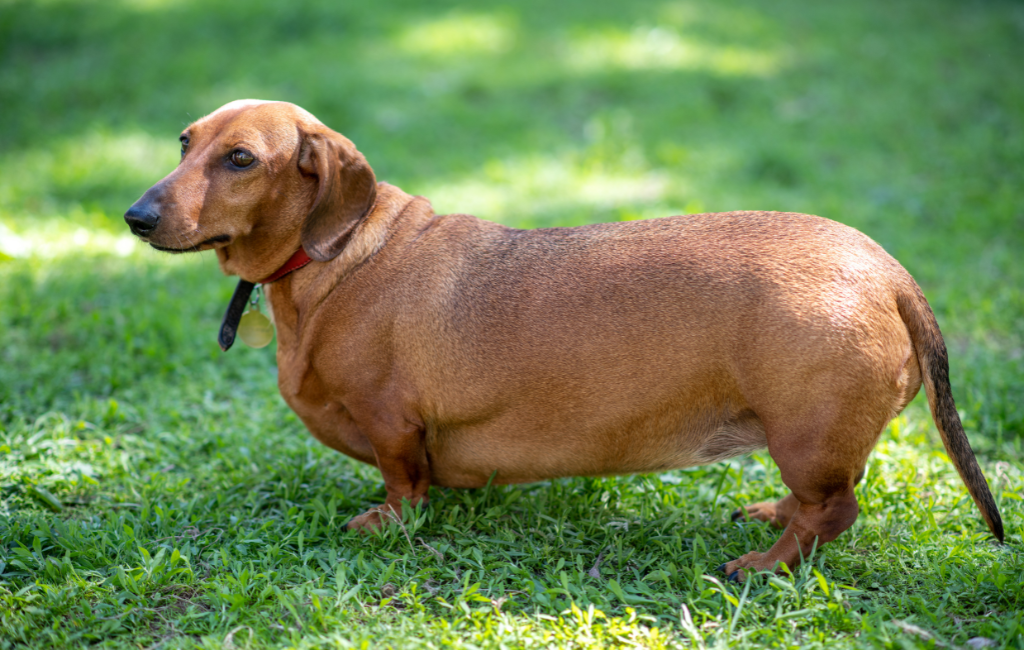
Dachshunds, like many small dog breeds, can be prone to obesity due to various factors, including:
-
Small Size - Due to their small size, Dachshunds have lower caloric requirements compared to larger breeds. Overfeeding or providing excessive treats can lead to weight gain more easily in smaller dogs.
-
Short Legs and Long Body - The unique body structure of Dachshunds can contribute to challenges in maintaining a healthy weight. However, excess weight can put strain on their spine and joints and a healthy weight is crucial for their overall well-being and mobility.
-
Genetic Factors - Some individual Dachshunds may have genetic factors that affect their metabolism and predispose them to weight gain.
-
Love of Food - Dachshunds are known for their love of food, and their affectionate nature can sometimes result in owners providing extra treats. It's important to be mindful of treat intake and overall caloric consumption.
-
Lack of Exercise - Despite their small size, Dachshunds are an active breed and require regular exercise to maintain a healthy weight. A lack of physical activity can contribute to weight gain.
11. English Bulldog
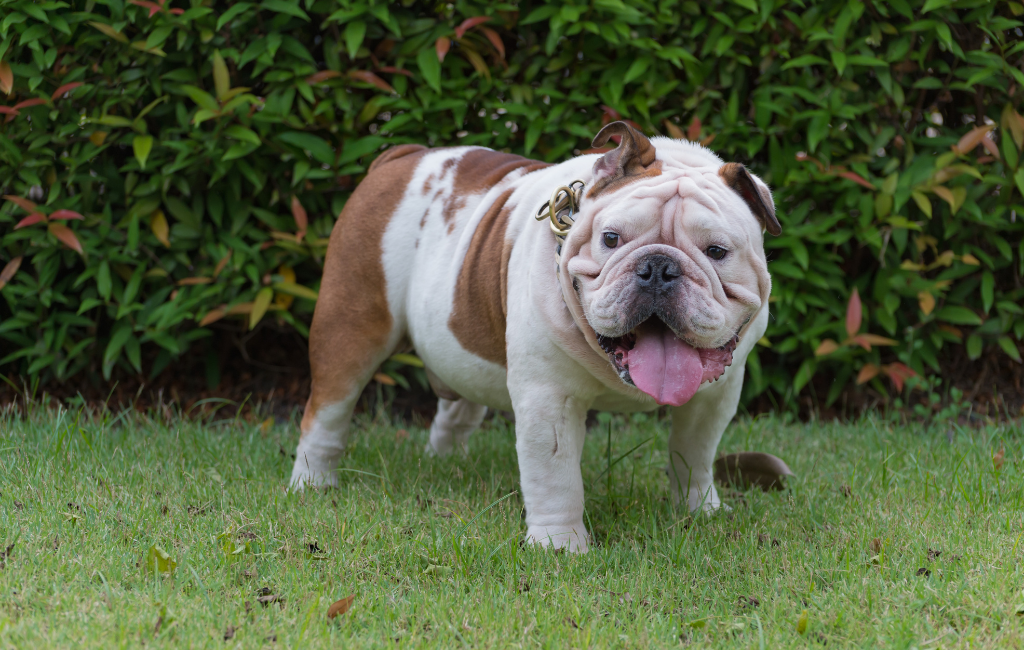
English Bulldogs can be prone to obesity for several reasons, including:
-
Low Metabolism - Bulldogs are known for having a relatively low metabolism compared to other breeds. This means they may burn calories more slowly, making them more susceptible to weight gain if their caloric intake is not carefully managed.
-
Love of Food - Bulldogs are known for their love of food, hearty appetite and food motivation. This can lead to overfeeding and overeating if portion sizes and treat intake are not carefully controlled.
-
Laid-Back Nature - Bulldogs are known for their laid-back (almost lazy) nature and low exercise needs. This means that they may be less active than some other breeds, contributing to weight gain.
-
Brachycephalic Breed - Bulldogs have short noses, which can lead to breathing issues and respiratory difficulties that cause exercise intolerance.
12. French Bulldog
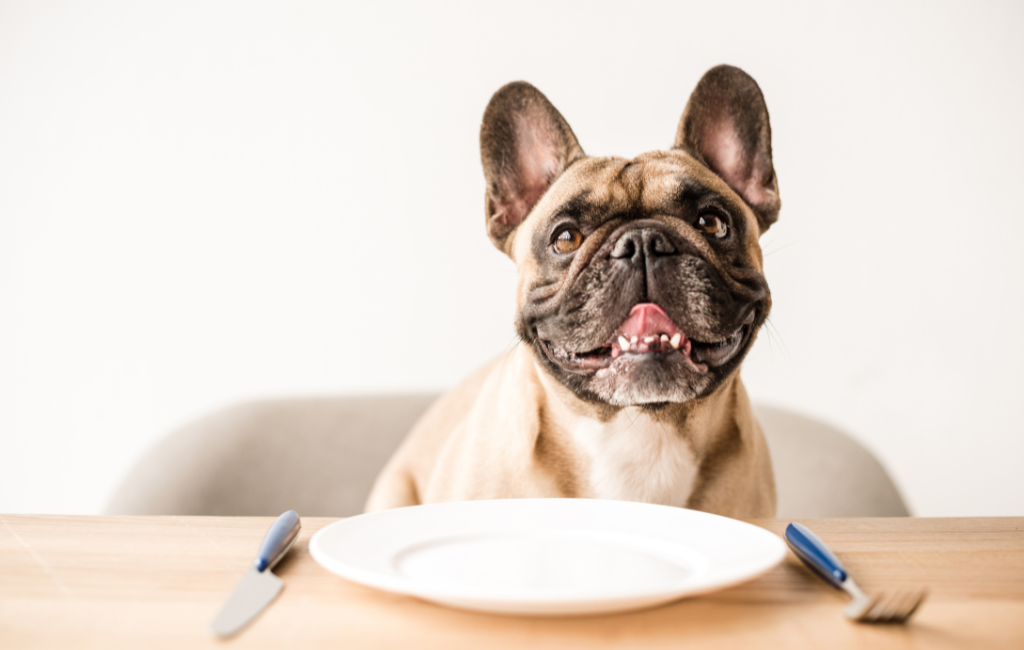
French Bulldogs, like other small and brachycephalic breeds, can be prone to obesity due to various factors, including:
-
Small Size - Due to their small size, French Bulldogs have lower caloric requirements compared to larger breeds. Overfeeding or providing excessive treats can lead to weight gain more easily in smaller dogs.
-
Laid-Back Nature - French Bulldogs are known for their relatively low energy levels and may not require as much exercise as some other breeds. Low activity levels can contribute to weight gain.
-
Love of Food - French Bulldogs are known for their love of food, hearty appetite and food motivation. This can lead to overfeeding and overeating if portion sizes and treat intake are not carefully controlled.
-
Brachycephalic Breed - French Bulldogs have short noses, which can lead to breathing issues and respiratory difficulties that cause exercise intolerance.
13. German Shepherd
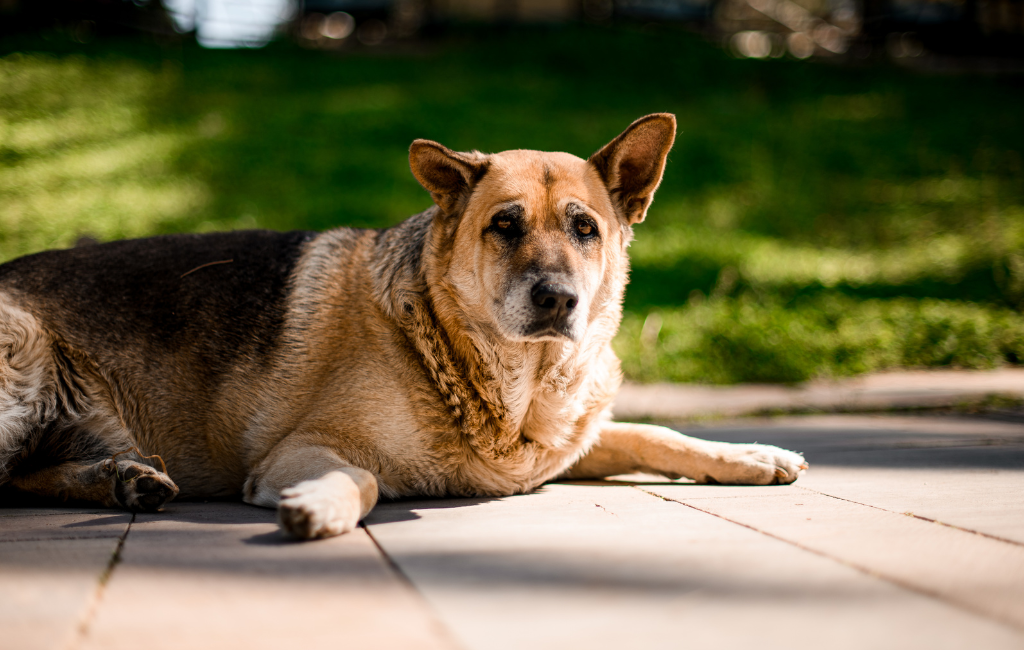
German Shepherds, like many dog breeds, may be prone to obesity due to several factors, including:
-
Genetic Factors - Some German Shepherds may have genetic factors that affect their metabolism and predispose them to weight gain.
-
Love of Food - German Shepherds can have a love of food, hearty appetite and food motivation. This can lead to overfeeding and overeating if portion sizes and treat intake are not carefully controlled.
-
Lack of Exercise - German Shepherds are active and energetic dogs that require regular exercise to maintain a healthy weight. A lack of physical activity can contribute to weight gain.
-
Age and Physical Issues - As German Shepherds age, they may experience joint, hip and other physical issues that can lead to weight gain if adjustments to their diet are not made.
14. Golden Retriever
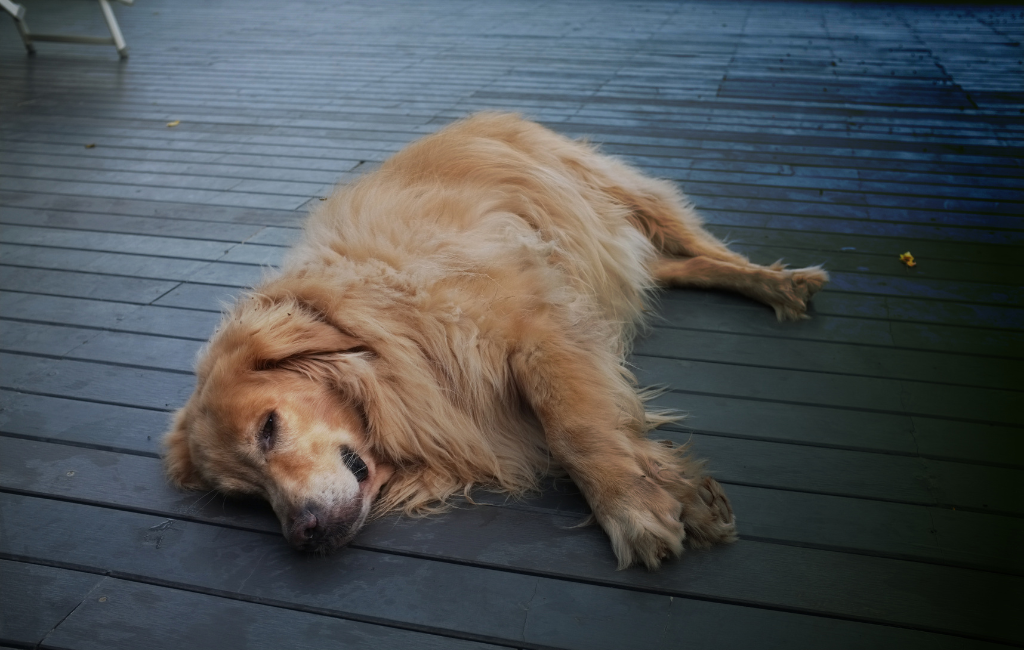
Golden Retrievers can be prone to obesity for various reasons, including:
-
Love of Food - Goldens are known for their love of food, hearty appetite and food motivation. This can lead to overfeeding and overeating if portion sizes and treat intake are not carefully controlled.
-
Genetic Factors - Some Goldens may have genetic factors that affect their metabolism and predispose them to weight gain.
-
Lack of Exercise - Goldens are an active and energetic breed that requires regular exercise to maintain a healthy weight. Insufficient physical activity can contribute to weight gain.
-
Age and Physical Issues - As Goldens age, they may experience joint, hip and other physical issues that can lead to weight gain if adjustments to their diet are not made.
-
Retrieval Instinct - Goldens have a strong retrieving instinct, and they may constantly seek food as a reward. This behavior can contribute to overeating and weight gain if not managed.
15. Labrador Retriever
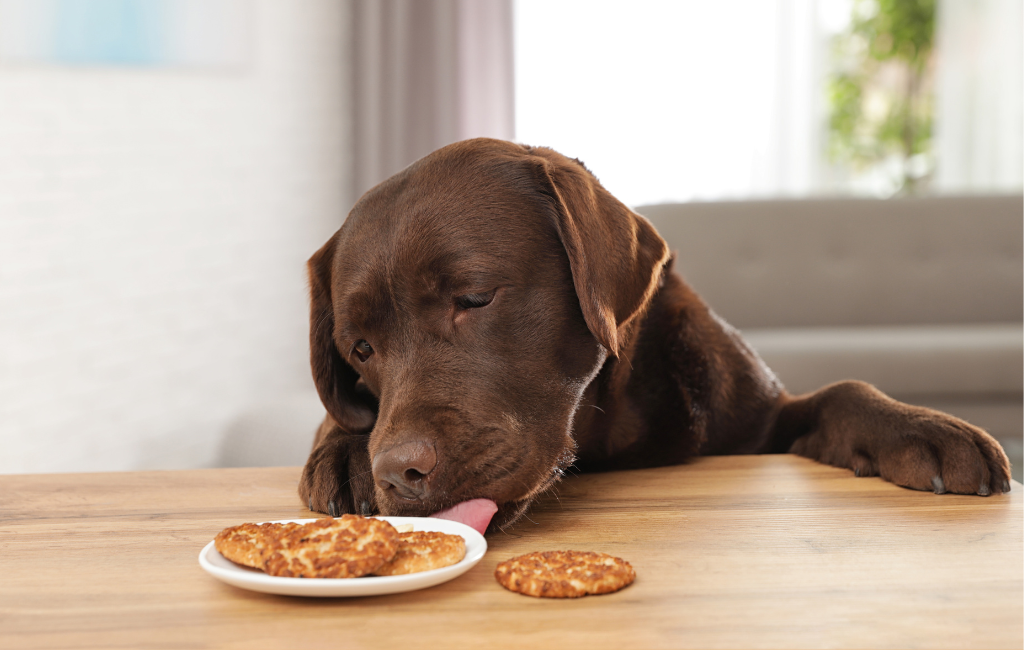
Labrador Retrievers, like many dog breeds, may be prone to obesity if certain factors are not properly managed. While not all individuals within the breed will experience weight issues, there are factors that can contribute to obesity in Labrador Retrievers:
-
Love of Food - Labs are are known for their love of food, hearty appetite and food motivation. This can lead to overfeeding and overeating if portion sizes and treat intake are not carefully controlled.
-
Genetic Factors - Some Labs may have genetic factors that affect their metabolism and predispose them to weight gain.
-
Lack of Exercise - Labradors are an active and energetic breed that requires regular exercise to maintain a healthy weight. Insufficient physical activity can contribute to weight gain.
-
Age and Physical Issues - As Labs age, they may experience joint, hip and other physical issues that can lead to weight gain if adjustments to their diet are not made.
-
Retrieval Instinct - Labs have a strong retrieving instinct, and they may constantly seek food as a reward. This behavior can contribute to overeating and weight gain if not managed.
16. Newfoundland
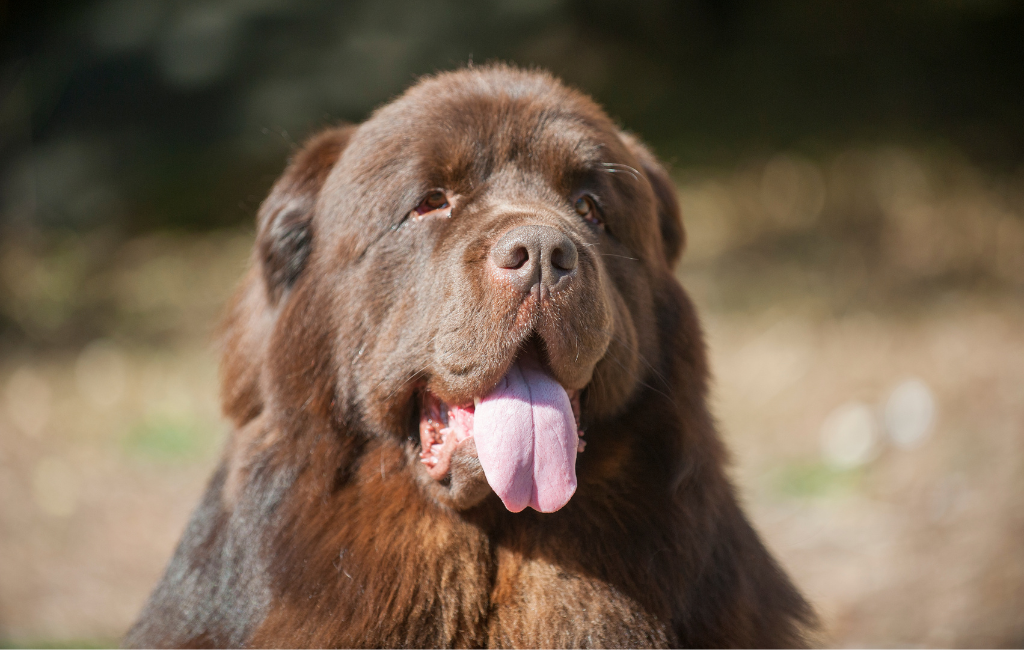
Newfoundlands, like many large dog breeds, may be prone to obesity due to several factors, including:
-
Large Size - Newfoundlands are a giant breed and their size can make them more susceptible to weight-related issues. Larger dogs may be at a higher risk of obesity if their caloric intake is not carefully managed.
-
Genetic Factors - Some Newfoundlands may have genetic factors that affect their metabolism and predispose them to weight gain.
-
Low Metabolism - Newfoundlands may have a slower metabolism compared to other breeds. This means they may burn calories more slowly, making them more susceptible to weight gain if their caloric intake is not carefully controlled.
-
Love of Food - Newfoundlands are known for love of food and hearty appetite. Their food motivation can lead to overeating if portion sizes and treat intake are not carefully controlled.
-
Laid-Back Nature - Because most giant dogs have low to moderate exercise needs, they may receive an insufficient amount of physical activity. Despite their size, Newfoundlands benefit from regular exercise to maintain a healthy weight and overall well-being and inactive lifestyle can contribute to weight gain.
17. Pit Bull

Pit Bulls, like many other dog breeds, may be prone to obesity for various reasons, including:
-
Genetic Factors - Some Pit Bulls may have genetic factors that affect their metabolism and predispose them to weight gain.
-
Love of Food - Pit Bulls are known for are known for their love of food and hearty appetite. Their food motivation can lead to overeating if portion sizes and treat intake are not carefully controlled.
-
Lack of Exercise - Pit Bulls are an active breed that requires regular exercise to maintain a healthy weight. But some believe they are low energy, which leads to Insufficient physical activity that can contribute to weight gain.
-
Age and Physical Issues: As Pit Bulls age, there may be changes in their activity level and weight gain can occur if adjustments to their diet are not made.
18. Pug

Pugs, like many small dog breeds, can be prone to obesity for several reasons, including:
-
Small Size - Due to their small size, Pugs have lower caloric requirements compared to larger breeds. Overfeeding or providing excessive treats can lead to weight gain more easily in smaller dogs.
-
Love of Food - Pugs are known for are known their love of food and hearty appetite. Their food motivation can lead to overeating if portion sizes and treat intake are not carefully controlled.
-
Laid-Back Nature - Pugs are not as active as some other breeds, but a sedentary lifestyle can contribute to weight gain.
-
Genetic Factors - Some Pugs may have genetic factors that affect their metabolism and predispose them to weight gain.
-
Brachycephalic Breed - Pugs have short noses, which can lead to breathing issues and respiratory difficulties that cause exercise intolerance.
19. Rottweiler
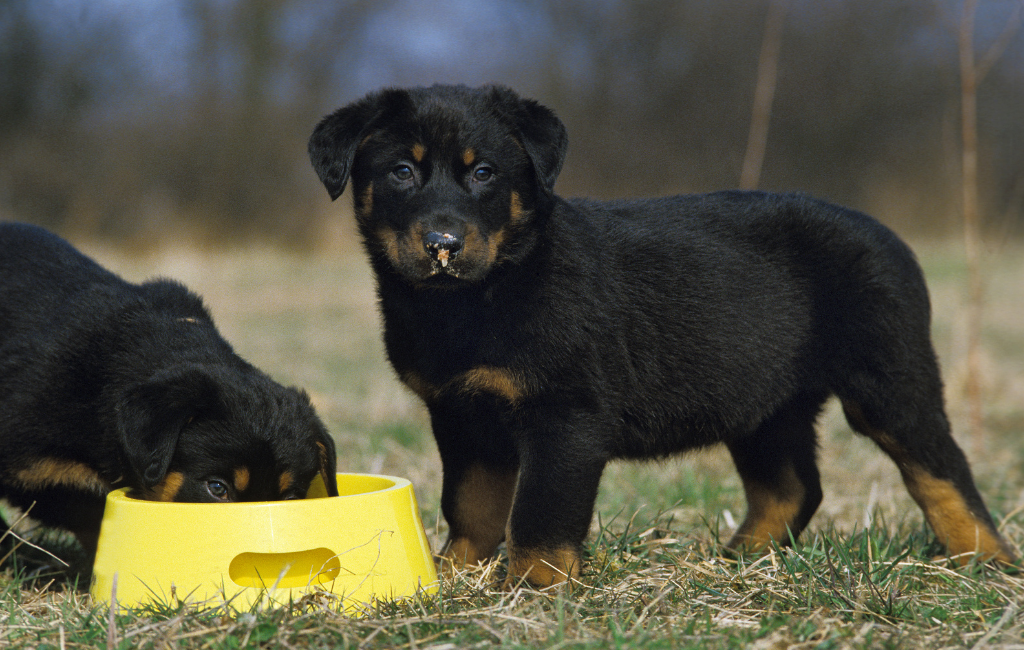
Rottweilers, like many other large dog breeds, may be prone to obesity due to various factors, including:
-
Genetic Factors - Some Rottweilers may have genetic factors that affect their metabolism and predispose them to weight gain.
-
Large Size - Due to their large size, Rottweilers have higher caloric requirements compared to smaller breeds that can lead to overfeeding and subsequent weight gain.
-
Love of Food - Rottweilers are known their love of food and hearty appetite. Their food motivation can lead to overeating if portion sizes and treat intake are not carefully controlled.
-
Lack of Exercise - Rottweilers are an active breed that requires regular exercise to maintain a healthy weight. Insufficient physical activity can contribute to weight gain.
20. Scottish Terrier

Scottish Terriers, like many small dog breeds, may be prone to obesity due to several factors, including:
-
Genetic Factors - Some Scottish Terriers may have genetic factors that affect their metabolism and predispose them to weight gain.
-
Love of Food - Scottish Terriers can have a love of food and hearty appetite. Their food motivation can lead to overeating if portion sizes and treat intake are not carefully controlled.
-
Lack of Exercise - While Scottish Terriers are a small breed, they still benefit from regular exercise to maintain a healthy weight. Insufficient physical activity can contribute to weight gain.
21. Shar Pei

Shar Peis, like many dog breeds, may be prone to obesity for various reasons, including:
-
Genetic Factors - Some Shar Peis may have genetic factors that affect their metabolism and predispose them to weight gain.
-
Love of Food - Shar Peis can have a love of food and hearty appetite. Their food motivation can lead to overeating if portion sizes and treat intake are not carefully controlled.
-
Laid-Back Nature - While Shar Peis are not extremely active dogs, they still benefit from regular exercise to maintain a healthy weight. Insufficient physical activity can contribute to weight gain.
22. Shetland Sheepdog
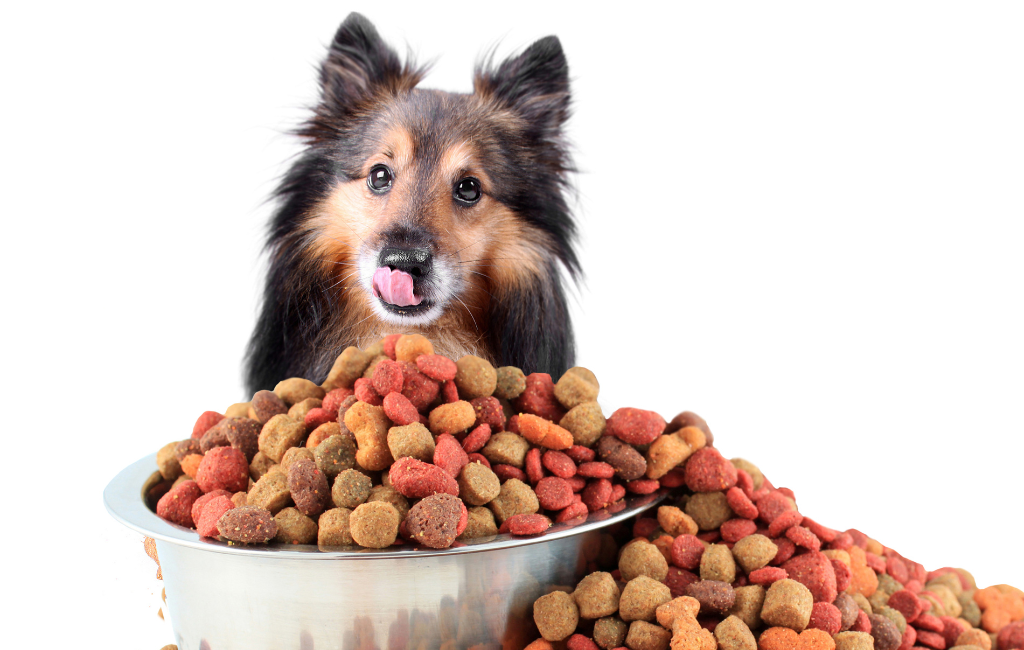
Shetland Sheepdogs may be prone to obesity due to several factors, including:
-
Genetic Factors - Some Shetland Sheepdogs may have genetic factors that affect their metabolism and predispose them to weight gain.
-
Love of Food - Shetland Sheepdogs are known to have a love of food and hearty appetite. Their food motivation can lead to overeating if portion sizes and treat intake are not carefully controlled.
-
Lack of Exercise - Shetland Sheepdogs are an active and energetic breed that requires regular exercise to maintain a healthy weight. Insufficient physical activity can contribute to weight gain.
23. Shih Tzu

Shih Tzus, like many small dog breeds, may be prone to obesity for various reasons, including:
-
Small Size - Due to their small size, Shih Tzus have lower caloric requirements compared to larger breeds. Overfeeding or providing excessive treats can lead to weight gain more easily in smaller dogs.
-
Love of Food - Shih Tzus are known for having a love of food and hearty appetite. Their food motivation can lead to overeating if portion sizes and treat intake are not carefully controlled.
-
Laid-Back Nature - Shih Tzus are a small breed with a laid-back nature, but they still benefit from regular exercise to maintain a healthy weight. Insufficient physical activity can contribute to weight gain.
24. Staffordshire Bull Terrier

Staffordshire Bull Terriers, like many other dog breeds, may be prone to obesity due to various factors, including:
-
Genetic Factors - Some Staffordshire Bull Terriers may have genetic factors that affect their metabolism and predispose them to weight gain.
-
Love of Food - Staffordshire Bull Terriers are known to love food and have a hearty appetite. Their food motivation can lead to overeating if portion sizes and treat intake are not carefully controlled.
-
Lack of Exercise - Staffordshire Bull Terriers are an energetic and muscular breed that requires regular exercise to maintain a healthy weight. Insufficient physical activity can contribute to weight gain
25. West Highland White Terrier
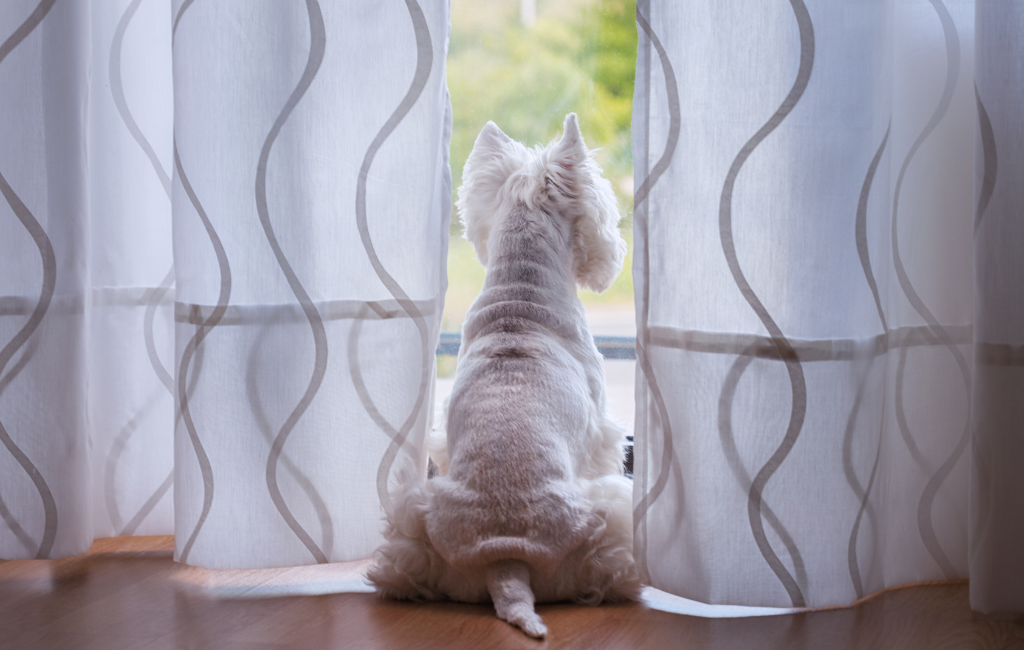
West Highland White Terriers, like other small dog breed, may be prone to obesity due to several factors, including:
-
Genetic Factors - Some West Highland White Terriers may have genetic factors that affect their metabolism and predispose them to weight gain.
-
Love of Food - West Highland White Terriers can have a love of food and hearty appetite. Their food motivation can lead to overeating if portion sizes and treat intake are not carefully controlled.
-
Lack of Exercise - While West Highland White Terriers are a small breed, they are energetic and benefit from regular exercise to maintain a healthy weight. Insufficient physical activity can contribute to weight gain.
26. Yorkshire Terrier
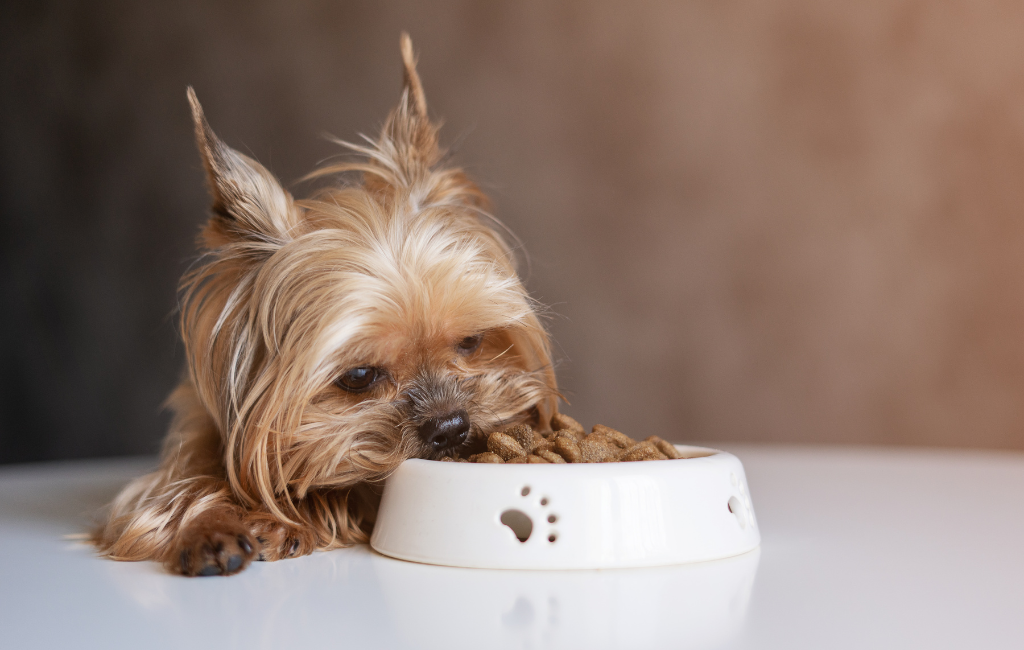
Yorkshire Terriers, like other small dog breed, may be prone to obesity for various reasons, including:
-
Small Size - Due to their small size, Yorkshire Terriers have lower caloric requirements compared to larger breeds. Overfeeding or providing excessive treats can lead to weight gain more easily in smaller dogs.
-
Love of Food - Yorkshire Terriers can have a love of food and hearty appetite. Their food motivation can lead to overeating if portion sizes and treat intake are not carefully controlled.
-
Genetic Factors - Some Yorkshire Terriers may have genetic factors that affect their metabolism and predispose them to weight gain.
-
Lack of Exercise - While Yorkshire Terriers are a small breed, they c an be energetic and benefit from regular exercise to maintain a healthy weight. Insufficient physical activity can contribute to weight gain.
It's important to note that individual dogs within any breed may have different energy levels and metabolism. Responsible feeding, portion control, regular exercise, and monitoring body condition are crucial for preventing obesity in all dog breeds. Consulting with a veterinarian for personalized advice based on a dog's specific needs is always recommended.

